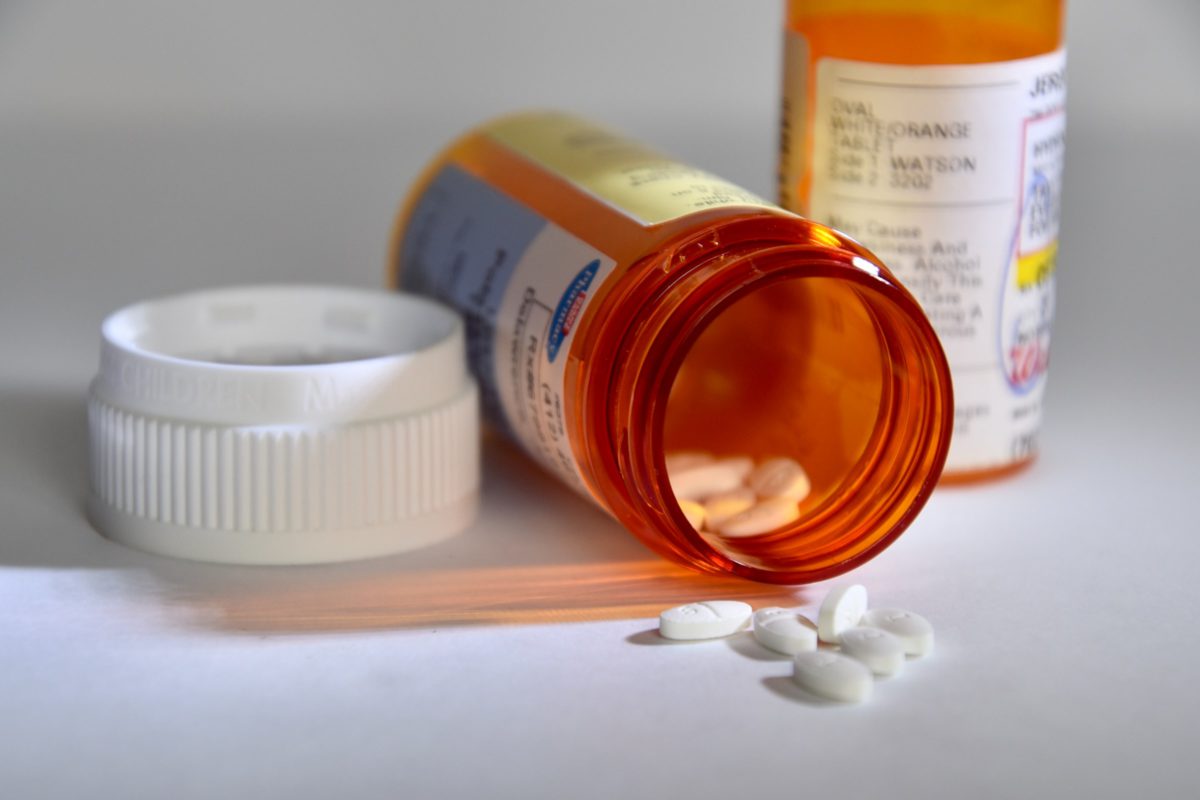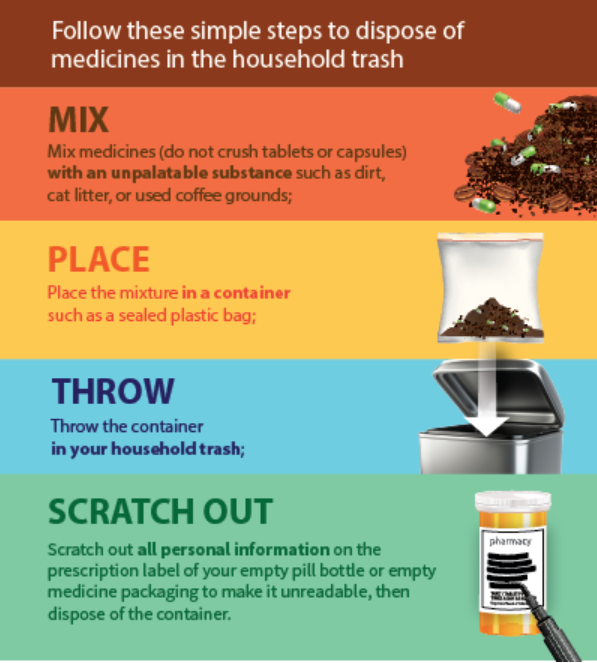
How To Dispose Of Unused Or Expired Medicines The Right Way
By a Biometrica staffer
In 2019, 9.7 million people misused prescription pain relievers, 4.9 million people misused prescription stimulants, and 5.9 million people misused prescription tranquilizers or sedatives. A majority of those misused prescription drugs were obtained from family and friends, often from the home medicine cabinet, the 2019 National Survey on Drug Use and Health found. These alarming numbers are part of a crucial public safety and public health issue, one that several organizations including the Drug Enforcement Administration (DEA), the Food and Drug Administration (FDA), and the Environmental Protection Agency (EPA), along with local law enforcement and pharmacies, strive to address.
Often, unused prescription drugs end up in the wrong hands, and can result in dangerous or tragic situations. The DEA says the good news is thousands of people from across the country are already safely and anonymously turning in a record amount of unused or expired prescription drugs. In this piece, we give you a broad overview of the various ways to dispose off unused or expired medicines while clearing out your medicine cabinet.
Take Back Sites
The best way, by far, to safely dispose of most types of unused or expired drugs is to take it to a “drug take-back site,” location, or program. This method applies to both prescription and non-prescription (for instance, over the counter) medicines. There are typically two types of take-back options:
- Permanent collection sites: Some facilities and businesses are registered with the DEA to collect your unused or expired medicines. These collection sites safely and securely gather and dispose of your unused or expired medicines, including those that contain controlled substances. Some examples of authorized collection sites could be retail, hospital, or clinic pharmacies; and/or law enforcement facilities. They may offer onsite medicine drop-off boxes; mail-back programs; or other in-home disposal methods to assist you in safely disposing of your unused or expired medicines.
You can find a location closest to you here, or call the DEA Diversion Control Division Registration Call Center at 1-800-882-9539 for more information. - Periodic take-back events like the DEA’s National Prescription Drug Take Back Day: During these events, temporary drug collection sites are set up in communities nationwide for safe disposal of prescription drugs. Local law enforcement agencies may also sponsor medicine take-back events in your community, and local waste management authorities could be contacted to learn about such events in your area.

The Flush List
Let’s say you cannot go to a drug take back site, or can’t find one near you, or missed a take back event in your area. What can you do then? There are ways to dispose of medicines the right way even at home.
The first step is to check if the particular medicine you are trying to dispose of is on the FDA’s Flush List. These are medicines that, for safety reasons, come with specific instructions to immediately flush down the toilet, but only if a drug take-back option is not readily available of course. What kind of medicines are on the Flush List? Those that are:
- sought-after for their misuse and/or abuse potential
- can result in death from one dose if inappropriately taken
If children, adults, or pets in your home accidentally or intentionally ingest, touch, misuse, or abuse a medicine on the Flush List, they can suffer serious consequences including death. An example of a medicine on the flush list is the fentanyl transdermal system (also known as a fentanyl patch), which contains an opioid.
In case there’s no drug take-back option, or you can’t get to one for some reason, flushing medicines on the Flush List helps keep everyone in your home safe by making sure these powerful and potentially dangerous medicines (when used inappropriately) are not accidentally or intentionally ingested, touched, misused, or abused, the FDA says. It’s equally important, however, to remember not to flush medicines that are not on the Flush List.
There are concerns that flushing down medicines at homes results in small levels of drugs possibly being found in surface water, such as rivers and lakes, and in drinking water supplies. The FDA and the EPA say they take the concerns of dispersing certain medicines into the environment seriously. But they have not yet found signs of environmental effects caused by flushing recommended drugs. In fact, the FDA says it published a paper to assess this concern, finding negligible risk of environmental effects caused by flushing recommended drugs.
Disposing Non-Flush List Medicines In The Trash
If the medicine you are trying to dispose of is not on the Flush List, does not come with any disposal instructions, and you don’t have/are unable to go to a drug take back site, what can you do?
The FDA recommends following these steps:
- Mix medicines (liquid or pills; do not crush tablets or capsules) with an unappealing substance such as dirt, cat litter, or used coffee grounds
- Place the mixture in a container such as a sealed plastic bag
- Throw away the container in your trash at home
- Delete all personal information on the prescription label of empty medicine bottles or medicine packaging, then trash or recycle the empty bottle or packaging.
You can read the EPA’s guidelines to dispose of medicines at home in the proper manner here.

Disposing Needles & Syringes
Finally, how does one correctly get rid of needles and syringes? The FDA recommends a two-step process:
- Place all needles and other sharps in a sharps disposal container immediately after they have been used. Keep these containers out of reach of children and pets. Do not overfill a sharps disposal container as you will increase the risk of an accidental needle-stick injury. When the container is about three-quarters full, follow your community guidelines for getting rid of the container. Do not reuse sharps disposal containers.
- Sharps disposal guidelines and programs vary depending on where you live. Check with your local trash removal services or health department to see which of the following disposal methods are available in your area. It could be drop boxes or supervised collection sites at places such as doctors’ offices, hospitals, pharmacies, health departments, medical waste facilities, and/or police and fire stations. You may be able to mail certain FDA-cleared sharps disposal containers to a collection site for proper disposal, usually for a fee. You could also use a household hazardous waste collection site, or your community may provide special waste pick-up services that send trained special waste handlers to collect sharps disposal containers from your home, usually for a fee.
For more information specific to your state, you can call Safe Needle Disposal at 1-800-643-1643 or e-mail info@safeneedledisposal.org.
If you have further questions about safe drug disposal, you may be able to find answers in the FDA’s FAQ section here.